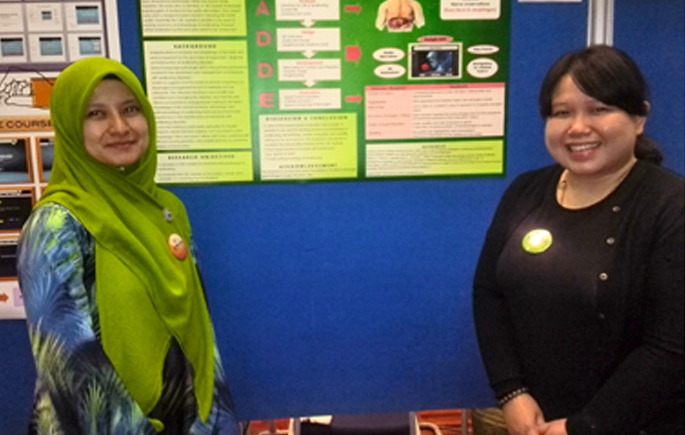First Computerised Module For Learning Anatomy of Mouth Produced
 By Saiful Bahri Kamaruddin
By Saiful Bahri Kamaruddin
Pix Ikhwan Hashim and Saiful Bahri Kamaruddin
BANGI, 16 FEBRUARY 2015 – A team from The Faculty of Health Sciences at The National University of Malaysia (UKM) has developed a module for medical students to learn anatomy of the mouth and the physiology of swallowing.
Believed to be a first for Malaysia, the project is a computer-based learning (CBL) Module which uses 3D animation and audio narration to show the anatomy of the mouth when swallowing.
Head of the team, Chow Yee Fun, who is doing her Masters in Speech Sciences told UKM News Portal at the K-Novasi Teaching and Learning Carnival here recently, that it took them two years to produce the module on CD.
The team was given a grant of RM10,000 of which RM6,000 was invested in the graphics design of the programme by a University of Malaya (UM) team.
Her supervisor, Dr Rahayu Mustaffa Kamal said the module is being evaluated by students and if all goes well it can be used in the second semester of the current 2015 session.
Dr Rahayu said one of the major challenges of teaching the anatomy of the mouth is the large and complex technical vocabulary and the ability to interpret and understand three dimensional relationships within the human body.
She hoped it would supplement traditional lectures where showing the functions of the mouth to a group of students is not easy. But with the module, students would be able to walk through the various steps at their own pace in an interactive manner.
In its complete form the module will also be available online as well as CD with students being able to evaluate their strengths and weaknesses themselves.
Understanding of the anatomy and physiology of the head and neck is important for the process of assessment, diagnosis and intervention of swallowing disorders.
Speech-language pathologist (SLP) is the primary profesional involved in the assessment and management of individuals with swallowing disorders.
Dr Rahahu said evidence suggested that the levels of clinical competency in managing the difficulties in swallowing or disphaygia, for SLPs in Malaysia are not adequate. The clinicians reported a lack of skills and confidence in managing the disorder which was influenced by the limited undergraduate training in the area.
Knowledge of the normal anatomy, physiology and pathophysiology of swallowing forms an important basic requirement in the identification of individuals with swallowing disorders.
Dr Rahayu said that computer-based training is particularly suited to understand the anatomy and physiology of swallowing because the study needs a lot of visual observation of minute details of the workings of the processes in a small space.
In addition to texts, the students will also be able to see with greater convenience what is happening in the mouth instead of just listening to a lecture.
![]()
